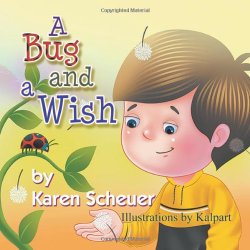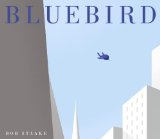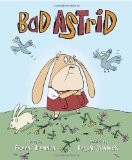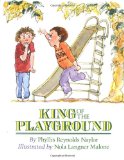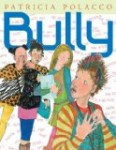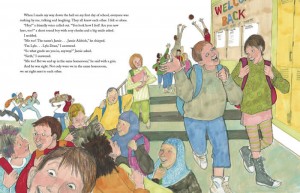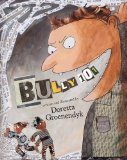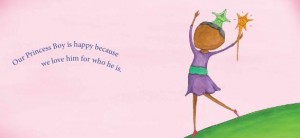 The Smallest Girl in the Smallest Grade written by Justin Roberts and illustrated by Christian Robinson
The Smallest Girl in the Smallest Grade written by Justin Roberts and illustrated by Christian Robinson
Antibullying Picture Book published by G.P. Putnam’s Sons: An Imprint of Penguin Group (USA)
You’ve really got to love a recording artist who has a very popular kids’ CD titled, Meltdown! and another called Not Naptime
. The album titles alone are enough to bring a smile to a weary parent’s face. So, I wanted to think that The Smallest Girl in the Smallest Grade
was terrific.
And, I do think it is a good book but, there are ways it could have been better.
Sally McCabe is both young and small. She is in the lowest grade at her school and she is the smallest child in the class. Kudos to the illustrator for depicting a racially diverse group of children in the classroom and at the playground. It would have been excellent to see similar diversity in terms of mobility (perhaps one child in a wheelchair or using crutches, for example).
Sally is unusually observant. She notices a kite that is tangled in a tree and she notices that the janitor’s ring has twenty-seven keys. Unfortunately, this is where my evaluation of the book begins to drop: one illustration of the janitor’s ring only shows seven keys and another shows five keys. I completely understand that twenty seven may have been essential to the rhyme BUT the illustrations should be true to the story. If the ring has twenty seven keys – the illustration of the ring should show us each one of them! Young children will pick up on this sort of disparity. They will want to know where the other twenty or twenty two keys are and the omission will detract from the important antibullying message the author is attempting to share.
When a bully pushes Sally’s classmate, the story tells us that he begins to cry but in the illustration, he is dry-eyed. These seemingly minor disparities really do make a difference and discerning young readers will notice them.
Adults may understand the (metaphorical) significance of wildflowers tipping toward light and cats meeting together in a parking lot but I doubt that, without guidance, young children will see any connection between the cats or the flowers and Sally’s story.
Essentially, Sally, observes bullying on the playground, in the hallway at school, in the classroom and in the school cafeteria. Eventually, she speaks up. She announces, “I’m tired of seeing this terrible stuff. Stop hurting each other! This is enough!”
This prompts all of Sally’s classmates and school staff members to point their fingers in the air in solidarity. Soon the school is a much more harmonious place. A somewhat “magical solution” to bullying? Yes, but, this is story that could be used to initiate discussions about bullying and social responsibility.
The Smallest Girl in the Smallest Grade at Amazon.com
The Smallest Girl in the Smallest Grade at Amazon.ca




